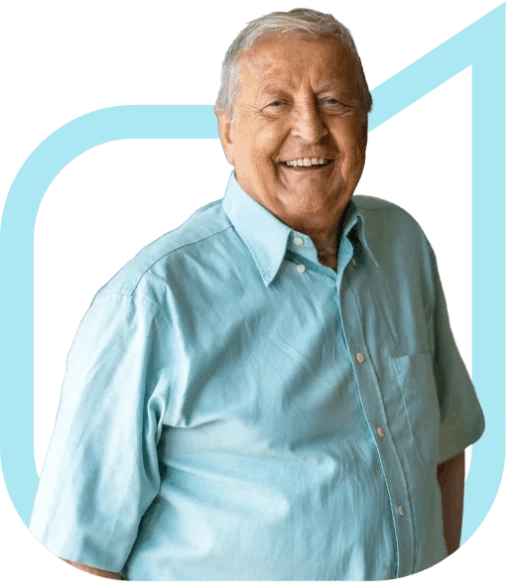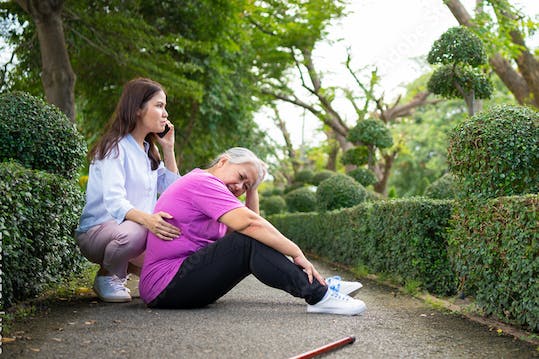Disclaimer: This information is not a substitute for professional medical advice, diagnosis or treatment.
A stroke is always a medical emergency, know the signs of a stroke and act F.A.S.T. Call 000 if you see any of these signs.
What are the signs of a stroke?
The F.A.S.T acronym is a quick and reliable way to identify the most common stroke warning signs:
- F – Face: Check their face, has their mouth drooped?
- A – Arms: Can they lift both their arms?
- S – Speech: Is their speech slurred, and do they understand you?
- T – Time: Time is critical, if you see any of these signs, call 000 straight away.
Why is it important to act F.A.S.T?
When a stroke strikes, it attacks up to 1.9 million brain cells (neurons) per minute1. Immediate medical intervention and care can greatly reduce the risk of permanent disability or death. By memorising the F.A.S.T acronym, you will be better equipped to act swiftly in the event someone you love experiences a stroke.
What causes a stroke?
A stroke occurs when the blood supply to part of your brain is suddenly interrupted or reduced, depriving brain tissue of essential oxygen and nutrients. During a stroke, neurons, synapses and myelinated fibres within the brain are lost1 and the result can be sudden loss of function in speech, movement, memory or vision – depending on which area of the brain is affected.
What are the two main types of stroke?
Ischaemic Stroke: ~85% of cases. Occurs when a blood vessel supplying blood to the brain is blocked, most commonly due to:
- Blocked arteries, when a blood clot or fatty deposit (plaque) blocks an artery in the brain, cutting off blood flow
- Thrombosis a blood clot forming in a brain artery
- An embolism, a clot or fatty deposit that forms elsewhere in the body and travels to the brain
- Atheroscelorosis, a build up of plaque in the arteries, causing narrowing and making them more susceptible to blockage
Haemorrhagic Stroke ~ 15% of cases. Occurs when a weakened blood vessel in the brain bursts, causing bleeding into surrounding brain tissue. This can be caused by:
- High blood pressure, a risk factor for both ischaemic and haemorrhagic strokes as it can damage blood vessels
- Anuerysm – a weakened blood pressure wall can bulge and rupture, causing bleeding
- Leaking or bursting blood vessel when a blood vessel in or around the brain ruptures, causing bleeding
A Transient Ischaemic Attack (TIA) is another form of stroke, sometimes referred to as a “mini-stroke”. A TIA is a temporary blockage of blood flow to the brain that does not cause lasting damage. A TIA is a serious warning sign that should not be ignored.
Can I reduce my risk of having a stroke?
Up to 80% of strokes can be prevented by managing key risk factors.
Know and manage your risk factors
- High blood pressure is the single biggest modifiable risk factor. Regular checks and treatment (lifestyle or medication) are important.
- Type 2 diabetes can accelerate vessel damage and clot formation
- High cholesterol contributes to arterial plaque build-up
- Atrial fibrillation or an irregular heartbeat increases clot risk8
Make healthier lifestyle choices
- Be active, regular physical activity can help to control weight, blood pressure, diabetes and cholesterol
- Eat well, a diet low in salt, saturated fat, red meat and added sugar and high in fruits, vegetables, whole grains, fibre and potassium supports heart and vessel health2
- Give up smoking, it doubles your risk of stroke3 by damaging blood vessels4 and raising blood pressure5
- Reduce alcohol intake, excess alcohol intake has been linked to increased blood pressure and a contributing factor to atrial fibrillation6
- Maintain a healthy weight, obesity can lead to higher blood pressure, diabetes and overall cardiovascular risk7
Monitor your health markers
Regular health checks with your GP to assess your blood pressure, cholesterol, diabetes risk factors and heart rhythm are essential, and if something feels off, don’t put off speaking with a doctor. If you’re on any medications for hypertension, high cholesterol or diabetes, ensure you use these as prescribed.
Act F.A.S.T and call Triple Zero (000) if you suspect a stroke
Remember, a stroke is always a medical emergency. If you see any stroke warning signs remember the acronym F.A.S.T and call Triple Zero – 000.
References
1 https://pubmed.ncbi.nlm.nih.gov/16339467/
2 https://pmc.ncbi.nlm.nih.gov/articles/PMC10708231/
3 https://pmc.ncbi.nlm.nih.gov/articles/PMC2928253/
4 https://pmc.ncbi.nlm.nih.gov/articles/PMC10264470/
5 https://pubmed.ncbi.nlm.nih.gov/9162447/
6 https://pmc.ncbi.nlm.nih.gov/articles/PMC9561500/
7 https://pmc.ncbi.nlm.nih.gov/articles/PMC3250069/
8 https://pmc.ncbi.nlm.nih.gov/articles/PMC10887311/
9 https://www.ahajournals.org/doi/10.1161/STROKEAHA.120.031707
Learn more
https://strokefoundation.org.au/about-stroke/learn/facts-and-figures











